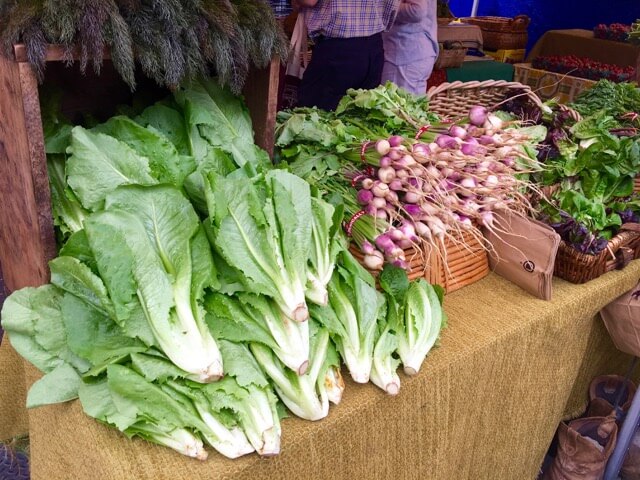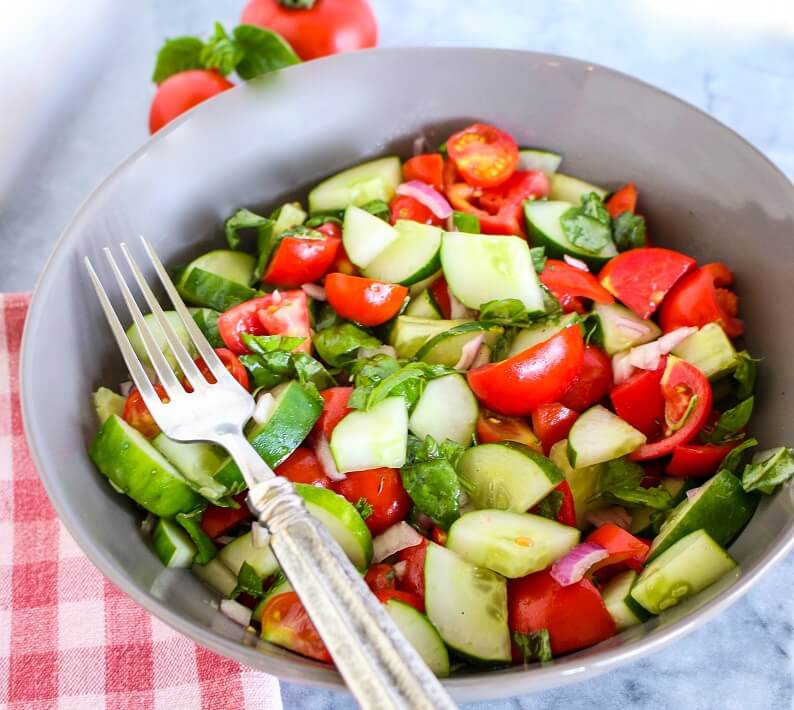The Impact of Food Miles

What is the impact of food miles on the food system and the environment? Sharon Palmer, MSFS, RDN explores the relevance of how long your food travels to get to your plate, and why it makes a difference on the planet.
One of the hottest food trends today has never been more accessible—or closer to home! Local eating is the talk of every town where numbers of locavores—people who eat food that is locally produced—abound. Farm to table and locavore dinners, where people enjoy dishes prepared from locally sourced ingredients, have been popping up all over the country, from small towns to urban metropolises. Chefs are calling out the names of farms on menus, as well as the story and details behind ingredients. Local eating has even landed top spots on food trend lists for the past several years, including the National Restaurant Association’s What’s Hot Culinary Forecast.
In the last 20 years, Americans have tripled the amount of local foods consumed, according to the USDA. Since 2006, farmers markets have grown by 180 percent, regional food hubs by 288 percent, and school district participation in farm to school programs by 430 percent.

What is local? There’s no single definition within the local movement, but most U.S. consumers consider local food to mean food grown within 100 miles, according to a survey by the Leopold Center for Sustainable Agriculture. However, local sometimes means food grown within a county, state, or province, or even, in the case of some small nations, within a country. According to the U.S. Congress 2008 Food, Conservation, and Energy Act, the total distance a product can be transported and considered a “locally or regionally produced agricultural food product” is less than 400 miles from origin, or within the state it is produced.

Lots to love about local. “One huge benefit of local produce is better taste. Once you’ve had local tomatoes, for example, others just don’t have the same flavor. When you buy at a farmers market the farmer can tell you about subtle taste differences between types of produce. When you love how produce taste you’re going to eat more!” says Matt Ruscigno, MPH, RD, who has a private practice in Los Angeles, CA.
Locally produced fruits and vegetables are also healthier because they don’t have to travel long distances for transport. Because they are harvested closer to peak ripeness, they contain more nutrients because they are allowed to ripen naturally. The Institute of Food Research reports that fresh vegetables lose up to 45 percent of their nutritional value between being picked and landing on a grocery shelf.
Eating local means fewer food miles, which equals fewer emissions from transport vehicles, including airplanes, ships, and trucks. A comparison between locally grown and conventionally grown produce found that local-grown produce travels about 50 miles to reach the consumer’s table half a day from harvest, while conventionally grown produce travels 1,500 miles and reaches the table 13 days past harvest. Conventional food distribution uses 4-17 times more fuel and emits 5-17 times more carbon dioxide than local and regional systems, according to an Iowa study. Local food systems rely upon a network of small, family farms, which are usually sustainably run, meaning they minimize pesticide use, practice no-till agriculture and composting, minimize transport to consumers, and use very little or no packaging.
Local food systems support local economies, generate jobs, and make fresh food available to those with limited access to healthful food. A study from Utah State University found that buying local keeps 65 percent of dollars in the community, whereas shopping at large chain stores only keeps 40 percent. It also brings communities together by opening a dialog between consumers and farmers and creating a stronger sense of place. People learn about foods that are unique to their area, and can ask farmers about things like pesticides, animal treatment, and fertilizers.

Local limitations. Food miles should be taken seriously, yet it’s important to recognize that miles are not the only factor that makes food sustainable. Foods that are local are not necessarily sustainable. A food grown out of season, or in a location to which it’s not well suited, for example, will require intensive use of fuel, capital, machinery, and other resources. Some foods, especially dairy and red meat, no matter how local they are, have especially high carbon footprints due to production processes and inputs.

What you can do. Food miles don’t tell the whole story—they are one spoke in the food analysis wheel. What they do tell us starts the important discussion about the distance food must travel to feed us locally, as well as all of humanity. One of the most important things you can do to impact the planet as an individual is to change your eating style.

Tips to Support Local, Sustainable Food
- Eat foods that are in season and local to your region
- Preserve foods when they are in season for use during the cooler months
- Consolidate your trips to the market to reduce food miles
- Shop at a local farmers market or join a CSA (Community Supported Agriculture)
- Encourage your favorite restaurant to source food locally
- Visit a local farm to learn what it produces
- Limit your meat intake; choose organic or free-range animal foods produced on sustainable farms
- Develop a local food directory that lists the local food sources near you
- Plant a garden and grow all the food you can
- Consume fewer highly processed foods and more whole plant foods
Image: Local food from Ferry Terminal Farmers Market in San Francisco, Sharon Palmer, MSFS, RDN
For other articles on local, sustainable eating, please check out the following:
Special Delivery: CSAs
Make the Most of Your Farmers Market
Start a Climate-Friendly Victory Garden Today!



Great article! Love reading about local food and all of their benefits. Keep spreading these great tips 🙂
Sharon, has the newsletter ever done an article on sugar and reducing one’s desire for sugar by eating less sugar? Or if you eat a lot of sugar and sugary foods,do you want even more sugary foods?
Another RD and I think that this is true, but I certainly do not remember reading anything about this idea.
Maybe it might be an idea for a future article by one of your writers.
Thanks, Karen Ross RD
PS. Love the article on The Impact of Food Miles
Hi, I did an article covering sugar here: https://sharonpalmer.com/ask-sharon-can-cutting-sugar-reduce-taste-for-it/